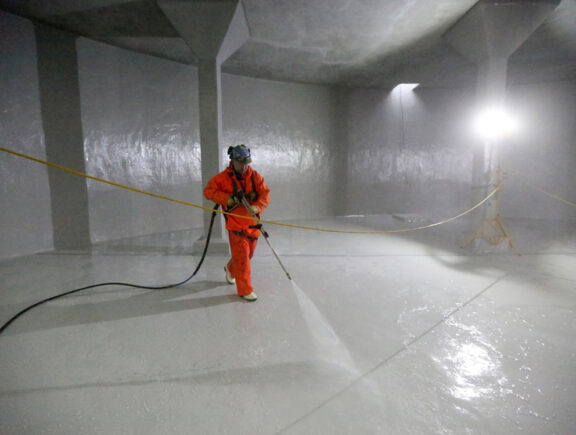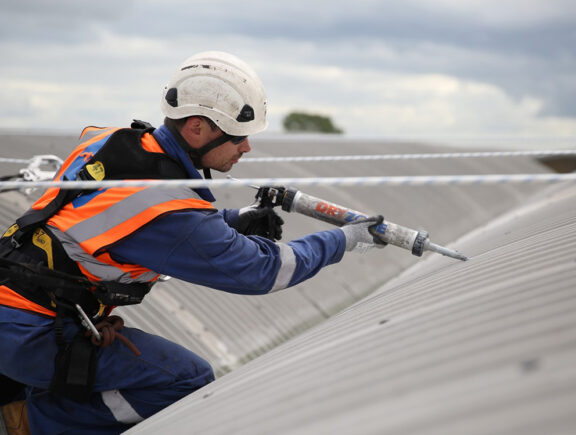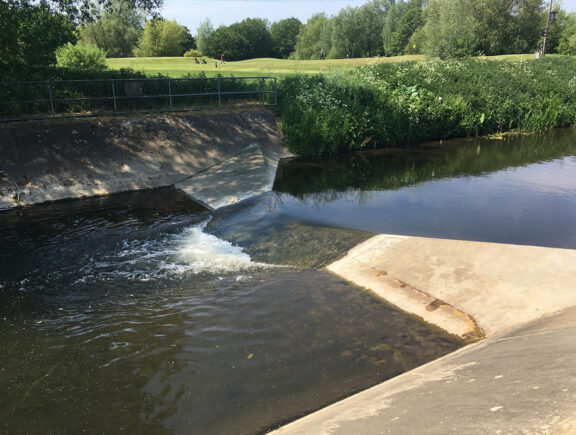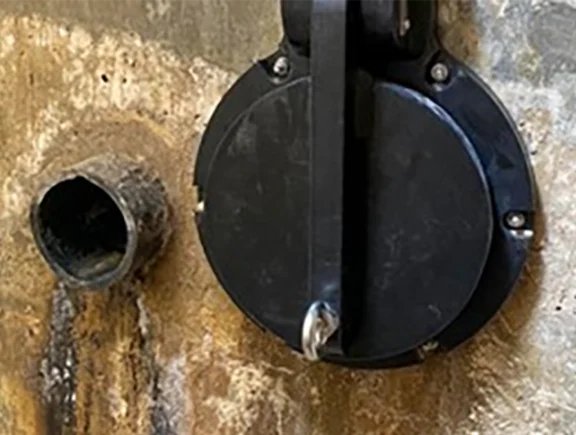Surveys
Prior to the cleaning and chlorinating process, a detailed survey is carried out on each asset to asses the condition of the structure, access ladders, hatches, valves and pipework. Any evidence of cracks, spalling and ingress will also be identified at this stage, and the bacteriological environment will be assessed.
Preparation
Before works begin, a site induction and detailed briefing on the safe system of works will be delivered to the site team. Lessons learnt, technical standards documents and video toolbox talks are then used to detail the step by step process and standards expected on-site, and the correct hygiene procedures for entering potable water structures.
When works commence, operatives will only enter the reservoir wearing clean overalls and boots, implementing the ‘Stonbury water space entry’ hygiene procedure, which is built on a three-colour coded system:
- Red is used for dirty equipment
- Green is used for cleaning equipment
- Blue is used for disinfected/ready for entry equipment
Once a dirty/clean crossover zone has been established, the team on-site use the ‘Stonbury chloros calculator’ app to prepare a disinfection chloros solution which is distributed into clean plastic spray bottles for the equipment. They also visually inspect all the water jetting units on-site and install drip trays where required.
Clean & Chlorination
The delivery hoses and lance are fed through the access point to the front of the tank, ensuring not to create trip hazards or a source of contamination. The process begins with cleaning the hatch covers of the reservoir with the jetting unit, leaving the water to pool in the troughs and once all cleaning operations are complete, the troughs will be hoovered with a wet vac and wiped down with clean cloths.
HPWJ will be used to remove any surface debris, the Site Supervisor will then inspect the clean has been completed to the required standard and present the asset to the client engineer who gives the authorisation necessary to disinfect the reservoir.
Before disinfection commences, the client representative will close the washout and operatives will be made aware of the risk of contaminating adjacent areas. No chlorinated water is to be discharged from the tank without client consent.
Chlorination of all surfaces will be carried out from the tank floor level by a single operative using the spray unit, and a second operative observing that all surfaces are covered.
Compliance
In order to ensure compliance, spot audits on the hygiene procedures used across Stonbury are carried out and shared learning with clients is encouraged to improve standards where possible.
As part of the cleaning and inspection programme, knowledge of Regulation 31 approved materials is essential to identify non-conforming work and/or specify suitable repair methods. Over the past two, Stonbury has developed and improved Regulation 31 training methods, including the use of an in-house training video.



